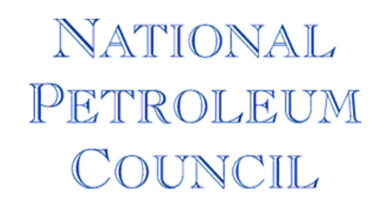Duty to Have Fall Protection in 6 Steps

By Christophe Chausse, Capital Safety Group
Falls while working at height are all too common; the greater tragedy is that each fall is preventable. Approximately 2.3 million work-related deaths worldwide occur annually, with the construction industry accounting for about 60,000 of them. Around the world, fall protection is moving up companies’’ safety agenda.
A contractor’s utmost concern must be keeping its workers safe. Having a fall protection and rescue plan in place prior to beginning a job gives employees the time to analyze and prepare for possible fall hazards. If the plan is developed in advance, you can be methodical about how to best prevent a fall. You have the time to train your workers on the ground and be sure they are fully prepared for hazardous situations before they go to work at heights.
The amount of money a company can save on insurance costs, injury compensation claims and increased productivity with a fall protection and rescue plan is significant. Fewer injuries lead to fewer workers compensation claims, which will lower insurance costs. Reduction in lost time from worker injuries also allows a company to be more productive and keep on-site work progressing to schedule.
A fall protection program not only reduces worker risk, it demonstrates that the company is making an effort to comply with regulations, which can prevent potential economic losses resulting from a fall, including fines, liability and increased insurance costs.
OSHA’s Fall Protection Plan & Preparation:
- Develop a policy and define the scope of the program
- Identify fall hazards through a hazard analysis
- Determine appropriate methods of control
- Conduct education, training sessions to ensure effective employee understanding of fall hazards and control methods
- Perform inspection and maintenance of fall protection equipment
- Administer and audit the program for compliance and continuous improvement
The following shows the six key steps to consider when developing and implementing a comprehensive fall protection program.

Step 1: Develop a policy and define the scope of the program
Managers in charge of developing a fall protection program for a company must develop a policy that is in line with existing company safety policies. The scope defines whom the policy applies to; types of activities the policy applies to; locations where the policy is in force; date the policy entered into force; duties and responsibilities of those involved in the fall protection program; and delegation of those duties and responsibilities.
Ongoing responsibilities include inspection, record keeping, maintenance, equipment replacement, incident reporting, enforcement, accident investigation, training and changes to the plan.
Step 2: Identify fall hazards through a hazard analysis
A hazard analysis, or fall hazard survey, is a key step in the development of a fall protection program. It identifies each fall hazard that exists at the facility and any other locations the policy covers. Along with the location of each fall hazard, the analysis should include the type of hazard; a sketch of the hazard; how often workers are exposed to the hazard; duration of exposure; height of a potential fall; control method (see Step 3); fall protection and rescue equipment to be used at the site of the hazard, if applicable; and environmental conditions that could affect the selection of appropriate fall protection equipment.
Environmental conditions might include presence of chemicals, sparks or flames, sharp or abrasive objects/surfaces, moving objects, and unstable/uneven/slippery surfaces, among others.
Step 3: Determine appropriate methods of control
The fall protection hierarchy details the preferred methods of controlling a fall hazard. The ultimate control method is to engineer out the hazard, which is usually only an option during the design stage of a new facility. The next-best control is to change work procedures so that workers are not exposed to the hazard. If an area must be accessed, the best control is to install passive fall protection systems, such as guardrails, handrails and covers for floor openings.
If passive fall protection is not possible, fall restraint systems that prevent the worker’s center of gravity from reaching the fall hazard should be used.
Whenever a fall arrest system is in place, a rescue plan must also be in place. The potential for injuries necessitates timely rescue. The most important elements of the rescue plan are identification of the rescuer – that is, who will perform the rescue (in-house personnel, emergency services or a combination of the two) – and what type of rescue system or equipment will be used at each fall hazard. Rescue should be as simple and as safe as possible.
Step 4: Conduct education, training sessions to ensure effective employee understanding of fall hazards and control methods
Classroom education for authorised persons – workers who will be exposed to fall hazards on a regular basis – should begin with coursework that teaches the trainee how to recognise fall hazards, how to eliminate or control fall hazards and relevant applicable regulations.
Workers also need to learn their responsibilities under those standards and how to use written fall protection procedures. A hands-on portion of training should include how to select, inspect, use, store and maintain fall protection equipment.

Step 5: Perform inspection and maintenance of fall protection equipment
Equipment should be inspected prior to and following each use. When inspecting equipment, ensure all required markings and labels are present and legible. Make sure all elements affecting equipment form, fit and function are present. And look for evidence of defects in or damage to hardware, straps, rope or cable, mechanical devices and connectors, including evidence that the equipment has been subjected to a fall event.
Step 6: Administer and audit the program for compliance and continuous improvement
Should a fall or near-miss occur, the manager or supervisor should conduct an incident investigation, the results of which should be recorded and kept on file. Investigations will help determine if the fall protection program has established the appropriate control method for a given hazard, if the training is adequate, and what improvements are needed to ensure such an incident doesn’t occur again.
The fall protection program must be updated everytime an investigation results in a recommendation for improvement.
In conclusion, keeping your fall protection and rescue plan up-to-date, active and rehearsed, so workers can respond in a timely manner in the event of a fall, is priceless. It is much better to plan ahead from a thorough perspective than to plan in haste. Be prepared from the ground up and do everything that you can to ensure the safety of your employees.
For more information visit them on the web at www.capitalsafety.com.



